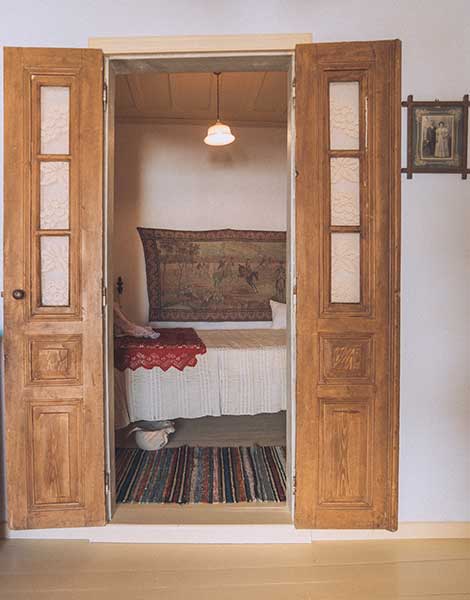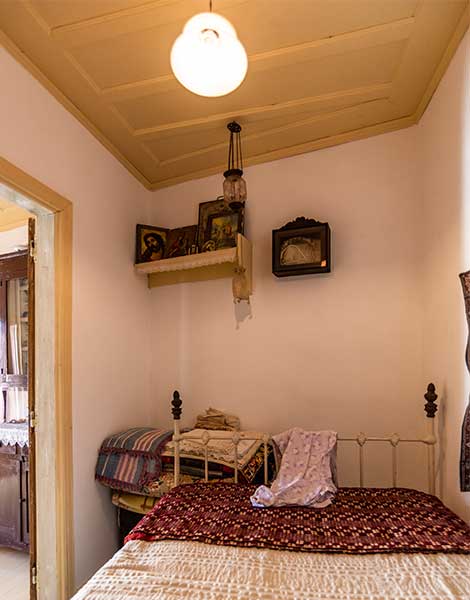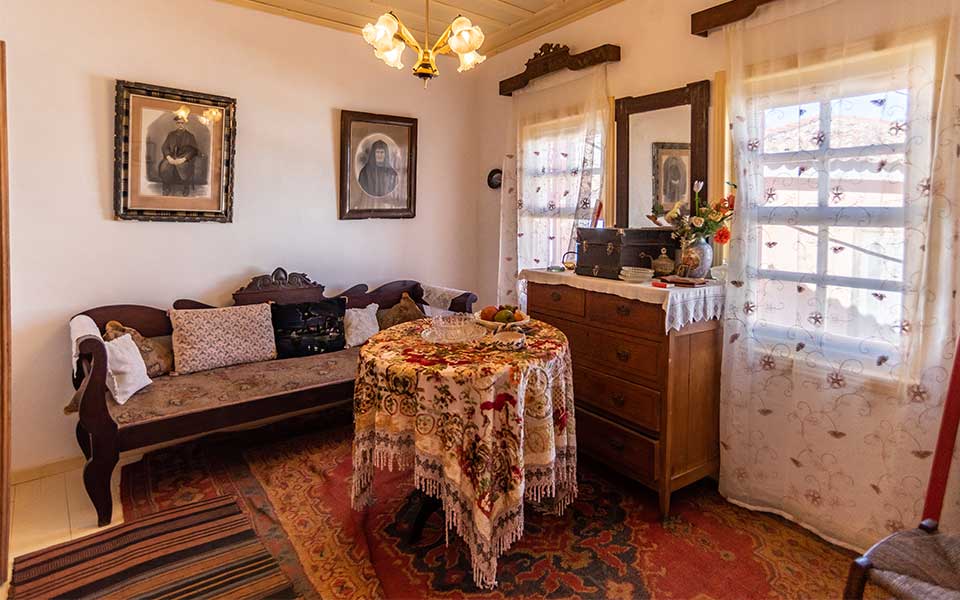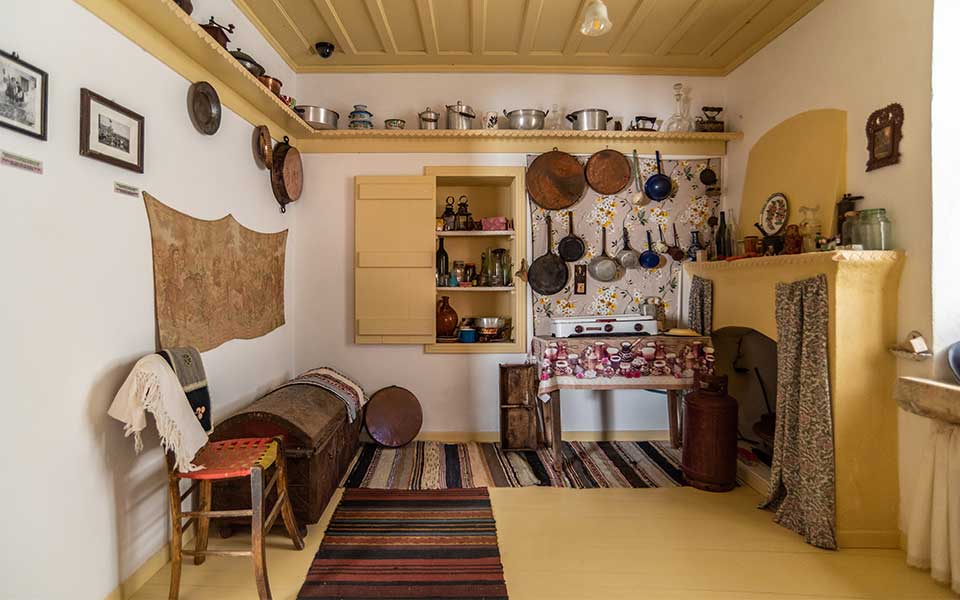In 1924, Haralambos Velonis, a 30-year-old vine-grower, settled in the mountain village of Manolates in northern Samos after marrying native girl Maroudio Kondyli. They moved right into a late Nineteenth-century home bought by her father, as a part of her dowry. The home bore witness to a lifetime of fortitude and disillusionment. Immediately, it holds the tales of a whole village – and extra.
“This home tells the story of its residents,” says present proprietor Nikitas Kyparissis, “however on the identical time, it tells the story of the village – and, by means of that, the story of this jap Aegean island.” A conservator and artisan in his late 40s, Kyparissis has spent years reworking the home right into a folklore museum to showcase his rising personal assortment. The results of his efforts, Manolates Folks Assortment – The Home of Velonis, is totally open to guests as of this season – a modest but transferring exhibition house.
“The place somebody would possibly as soon as have merely strolled by means of a slender village road, stopped for a bit, had a drink, regarded round and left – they’re now invited to step into a house,” he says. “By means of the objects, the sounds, the smells, they’ll expertise the life journey of the individuals who lived right here.”

© Nikolas Sfantos

© Nikolas Sfantos
A burly man with blond hair, inexperienced eyes and a sonorous voice, Kyparissis moved to Manolates – the village the place his grandmother, the native baker, was born – 20 years in the past; he was the identical age as Velonis when he first arrived. Disillusioned with large metropolis life, he left Athens behind. With help from his household, who bought an condominium within the capital, he was finally capable of buy the deserted and dilapidated property. He began by opening an eclectic memento store within the basement, promoting handcrafted objects of his personal design to make a dwelling.
Kyparissis, an artist, activist and group chief who has grow to be an important presence within the village, enjoying a key position in reviving and celebrating native traditions, initially discovered himself swept up in the identical wave of tourism that, over the previous 25 to 30 years, had reshaped the settlement – regularly displacing vine-growing as the principle supply of revenue whereas eroding its conventional character. It’s exactly that erosion he’s now working to withstand.

© Nikolas Sfantos
“What pushed me to ascertain the museum was the deadness I felt within the village,” says Kyparissis, who is usually discovered outdoors his retailer, enjoying the tsampouna – a standard Greek bagpipe. “My grandparents’ technology is gone. My mother and father’ technology – the individuals born within the Nineteen Forties – is fading quick.” Immediately, Manolates has simply 60 residents, lower than a dozen of whom are youngsters. “In a decade, that quantity will drop beneath 20,” he predicts. “So who will inform the tales of those individuals?”
Nestled within the lush, inexperienced slopes of Mount Karvounis (also called Ambelos), at an altitude of 320 meters, Manolates overlooks the Aegean Sea and the southwestern coast of Turkey. The village started as a typical rural Samian settlement of vine-growers. First inhabited within the late 18th century, houses had been often two-story buildings – households lived upstairs whereas the bottom ground, or “katoi,” served as storage, store house, or stables.

© Nikolas Sfantos
The museum occupies a constructing created by merging two adjoining homes that face the small however cozy sq. on the coronary heart of the village. One half options neoclassical components; the opposite bears Ottoman architectural influences, most characteristically a kind of bay window referred to as “sachnisi.” It’s a transparent reflection of how the jap Aegean island’s numerous and largely understudied folkloric identification has been formed by its proximity to Asia Minor.
Kyparissis was lucky to finish the structural restoration of the home only a yr earlier than Samos was struck by a 7-magnitude earthquake in 2020 – a catastrophe that claimed two lives and broken quite a few monuments and heritage buildings, together with one other folklore museum within the southern village of Koumeika. Working with meticulous care and deep affection, he revived the house’s inside – together with the lounge, eating room, kitchen and bed room – restoring them to a state of arrested decline.
Guests can now expertise a rigorously curated array of objects: humble kitchenware, handcrafted furnishings, woven rugs, mattress linens, vestments, books, household images and uncommon archival supplies – together with paperwork relationship again to the 18th and Nineteenth centuries.
“The best problem,” Kyparissis says, “is learn how to current one thing that has died – precisely because it was, simply earlier than it died.”

© Nikolas Sfantos

© Nikolas Sfantos
He was deliberate about avoiding litter. “We didn’t wish to overfill the house. That might have undermined the sensation of a modest, provincial house,” he explains. “When electrical energy first got here, there was only a wire, a socket and a bulb – perhaps a correct fixture solely within the ‘good’ room. It was all about perform, not design.”
“If I begin including fixtures or protecting the partitions with images, I distort the reality. The partitions had been principally naked – we had precisely seven framed items, every in its rightful place. This isn’t a storeroom of miscellaneous objects. Every part should serve a function.”
Preserving what issues with out tipping into extra is a fragile balancing act. However maybe what resonates most is the belief that the once-dismissed on a regular basis objects of rural life now carry the burden of reminiscence and loss.
“Greek guests at all times say two issues,” Kyparissis notes. “First: ‘This seems identical to grandma’s home.’ Then, nearly inevitably: ‘We had certainly one of these – and we threw it away.’ And actually,” he provides, “your coronary heart breaks.”

© Nikolas Sfantos
One of many museum’s most vital displays is a Columbia Grafonola phonograph that after belonged to Velonis. As a younger man, he had left for America looking for a greater life. Ten years later, he returned to his native village of Stavrinides – a stroll alongside a cobbled path from Manolates – along with his financial savings and some treasured belongings, together with the phonograph and a handful of Greek information made within the USA. It was a tangible fragment of Hellenism from the New World.
“That phonograph is an emblem of fixed migration, of the battle individuals face to face on their very own ft and preserve a livelihood,” Kyparissis explains. “It additionally represents Greek identification – an identification formed by motion, by the ebb and stream of individuals and tradition.”

© Nikolas Sfantos
After his wedding ceremony and transfer to Manolates in 1924, Velonis labored as a vine-grower and wine service provider. Manolates was no stranger to class divisions, and Velonis – like his spouse’s household – belonged to one of many few well-off households within the village. He turned a landowner, because of the cash he introduced again from the US, and employed farm laborers. Velonis’ fortune got here to an abrupt finish with the Axis occupation, plunging him again into the hardship he had as soon as escaped. In Might 1941, Samos got here beneath Italian management, with the sixth Infantry Division “Cuneo” stationed on the island. That winter, the Nice Famine devastated Samos, killing over 2,000 residents and forcing hundreds extra to flee.
Velonis’ wine cellars had been looted repeatedly by the Italian forces, commerce floor to a halt and life deteriorated beneath occupation. Certainly one of his daughters died of syphilis throughout this era. Though he resumed his work within the vineyards after the struggle, it was an ordeal that contributed to his early dying.
“In a means,” Kyparissis displays, “this home reveals that individuals usually share a standard destiny – a destiny not in contrast to Velonis’ personal.”

© Nikolas Sfantos
That shared sense of future turns into much more highly effective when objects within the museum start to have interaction guests in a type of dialogue.
“Once you present somebody the phonograph and clarify its story, it stops being simply an artifact. It turns into a part of the proprietor’s identification. After which a customer would possibly ask, ‘Did many individuals to migrate to America within the Nineteen Twenties?’”
One other such merchandise is a fragile greeting card from the Italian military, found within the close by village of Mytilinioi. Italian troops distributed clean playing cards to their troopers, who wrote greetings and despatched them house by way of navy mail.
“A customer would possibly come throughout that card and out of the blue understand that this isn’t simply Samos’ story; it’s a part of one thing greater. Whether or not they come from Germany, Italy, Australia, Canada, Turkey, or the Center East, guests start to see how the story of Samos connects to their very own.”
“And that,” Kyparissis says, “is the second somebody feels, ‘I exist on this story too.’”



Recent Comments